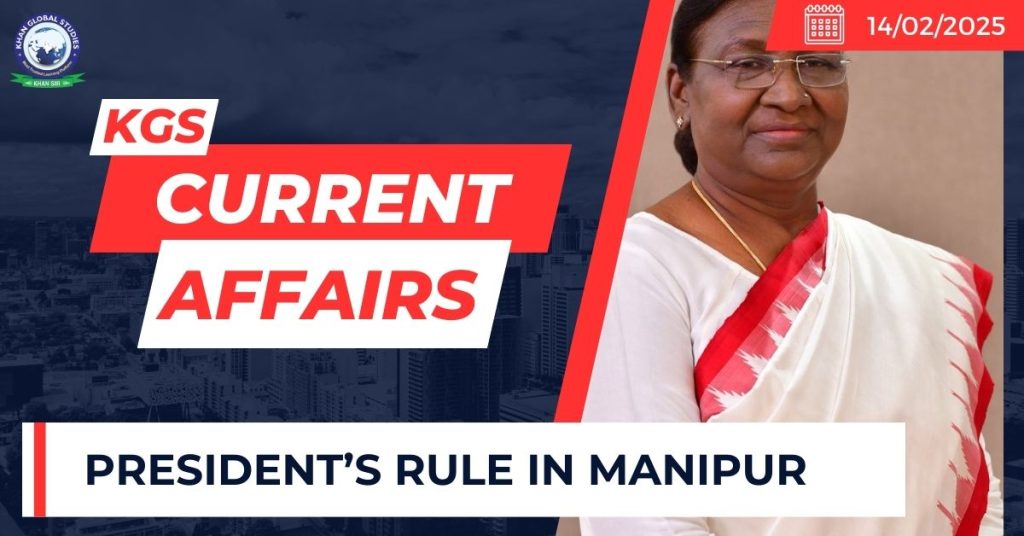Context:
President’s Rule has been recently imposed in Manipur under Article 356 of the Constitution.
More on the News
- President’s Rule has been imposed following the resignation of the Chief Minister of Manipur due to the ongoing ethnic violence in Manipur (Meitei-Kuki conflict, which started in May 2023).
- Recently in 2021, President’s Rule was imposed in Puducherry after the Congress government lost a vote of confidence.
About the President’s rule
Article 356 of the Indian Constitution allows the President to take over the state government and legislature when the state’s government cannot function as per the Constitution.

During its operation, the state executive is dismissed and the state legislature is either suspended or dissolved.
The president administers the state through the governor and the Parliament makes laws for the state.
- In brief, the executive and legislative powers of the state are assumed by the Centre.
It is imposed when the President is “satisfied” (based on a report from the state’s Governor) that the government of a state cannot be carried on in accordance with the provisions of the Constitution (may not have any connection with war, external aggression or armed rebellion).
It does not affect Fundamental Rights of the citizens.
As per Article 355, the Centre has a duty to protect every State from external aggression and internal disturbance, and to ensure that every State government operate according to the Constitution.
- Dr BR Ambedkar explained that its purpose is to prevent the arbitrary use of Article 356 by ensuring that the Centre’s interference in the state’s administration is constitutional.
How is President’s Rule implemented?
The President issues a ‘Proclamation,’ which lasts for 2 months initially.
Lok Sabha and Rajya Sabha must approve (by simple majority) the Proclamation within 2 months for it to continue.
If approved by Parliament, President’s Rule can last up to 6 months.
Further extensions (in 6-month intervals) can be granted for up to 3 years.
The Proclamation can only be extended beyond one year if:
- A National Emergency or a State Emergency is in place.
- The Election Commission certifies that general elections to the legislative assembly of the state cannot be held on account of difficulties.
Historical Use of President’s Rule:
- Since 1950, President’s Rule has been imposed 134 times in India, across 29 states and Union Territories.
- Manipur and Uttar Pradesh have seen maximum imposition of 11 and 10 times respectively.
- States with the Longest Time Under President’s Rule: Jammu & Kashmir (over 12 years); Punjab (over 10 years).
- These above states faced issues like militant activity or law and order problems.
Supreme Court’s Rulings related to the President’s rule:
The S R Bommai v Union of India case (1994):
- It clarified that the proclamation of President’s Rule is subject to judicial review.
- The ‘satisfaction’ of the President must be based on relevant material. The proclamation can be struck down if its is found to be based on irrelevant groups or is malafide or perverse.
- The state legislative assembly can only be suspended, and it can be dissolved only after the Parliament approves the proclamation.
- After the Supreme Court’s decision in the Bommai case, the number of times the President’s Rule has been imposed has reduced.
Rameshwar Prasad and others v. Union of India case (2006):
- The Court reinforced the Bommai principles by stating that Article 356 should not be used to stop a government from forming after elections.
- It emphasized that the correct way to check if a party has the majority is through a floor test in the assembly.

